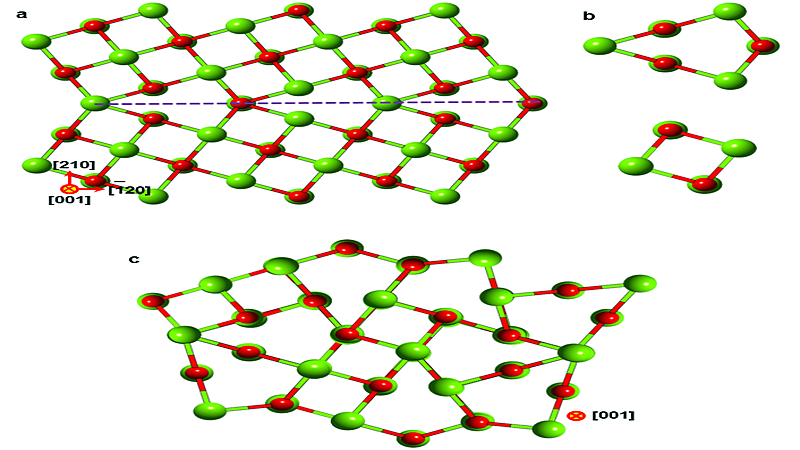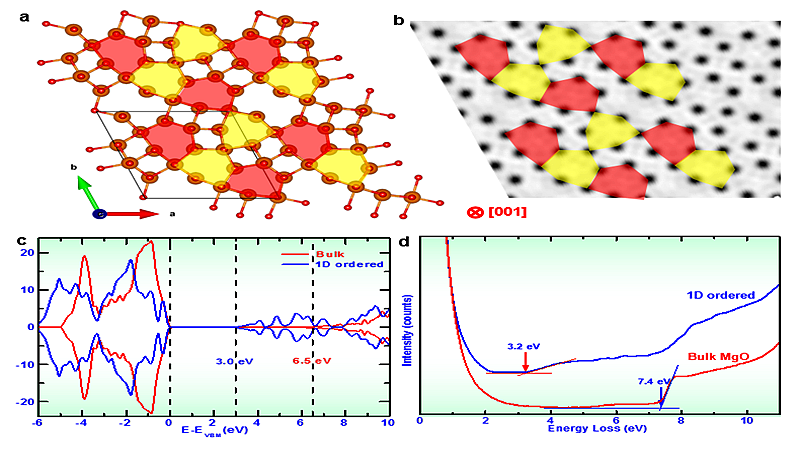Associate Professor Yin Deqiang of the Department of Engineering Mechanics, the School of Aerospace Engineering has recently made significant achievements in the solid state physics area. Professor Yin has discovered a new structure of solid matter that differs from crystals, quasi-crystals and non-crystals among ceramic materials, the one-dimension ordered structure (or one-dimension ordered crystal), in collaboration with Researcher Chen Chunlin from the Institute of Metal Research, Chinese Academy of Sciences and Professor Yuichi Ikuhara from the University of Tokyo and others. The achievements have been published in Nature Materials (IF: 39.235) under the titled “Ceramic phases with one-dimensional long-range order”. Associate Professor Yin Deqiang is the first author of the paper.
Solid matters can be grouped into three categories based on their symmetry, namely, crystal, quasi-crystal and non-crystal. Crystals are characterized by their rotational symmetry and translational symmetry. Their atoms are in periodic permutation with repetition in a 3D space in a regular way. Quasi-crystals are characterized by their rotational symmetry and they do not have the translational symmetry. The arrangement of atoms is in a long-range order and there is no 3D translational periodicity. Non-crystals have neither of rotational symmetry and translational symmetry, and the arrangement of atoms is not in a long-range order. This has been the general understanding of solid matter structures after discovery of quasi-crystals.
The research team led by Associate Professor Yin Deqiang used the combination of scanning transmission electron microscopy and the first principles calculation, and discovered the one-dimension ordered crystal in the ceramic material MgO Nd2O3 and thin-film materials made using different sedimentation methods. This has renewed our understanding of solid matter structures. The research has revealed that the structure has only the translational symmetry and periodicity of crystals on one direction, and on other directions, the arrangement is in disorder, thus forming a long-range ordered structure with one-dimension translation periodicity. The atomic arrangement of structural units composing the one-dimension ordered crystal is highly similar to that of the structural units of coincidence site lattice tilt grain boundary. The research also showed that though MgO crystal is an insulator with energy gap of 7.4eV, the MgO one-dimension ordered crystal is a wide-band semiconductor with energy gap of 3.2eV. The discovery of one-dimension ordered crystal indicated that the types of solid matter structures are in fact more diversified than known by people, and the physical properties of such new structures are significantly different from those of commonly seen structure types.
The research has been supported by the National Natural Science Foundation for Key Projects (11332013), the National Natural Science Foundation, and the Frontier Science Key Research Project of Chinese Academy of Sciences under the National Recruitment Program for Young Professionals. The research achievements were published online by Nature Materials on December 10.
Link of the paper: https://doi.org/10.1038/s41563-018-0240-0

Fig. 1 Schematic diagram of the atomic structure of one-dimension ordered crystals: The MgO one-dimension ordered crystal can be made up of MgO grain-boundary structural units.

Fig. 2 The ABF STEM image of MgO one-dimension ordered crystal formed within the triple-line grain boundary area (see Areas I and II). The MgO one-dimension ordered crystal is made up of many hexagonal structural units (shown as the colored shadow). The atomic arrangement is similar to the MgOΣ5 (210) [001] grain boundary structural units.

Fig. 3 The DFT theoretical calculation and STEM-EELS analysis have confirmed the atomic and electronic structures of MgO one-dimension ordered crystal. MgO crystal is an insulator with energy gap of 7.4eV. MgO one-dimension ordered crystal is a wide-band semiconductor with energy gap of 3.2eV.

Fig. 4 The one-dimension ordered crystal in Nd2O3 thin-film material; the Nd2O3 one-dimension ordered crystal is made up of many hexagonal structural units (shown as the colored shadow). The atomic arrangement is similar to that of the Nd2O3 Σ9 (221) [1 -10] grain-boundary structural units.

